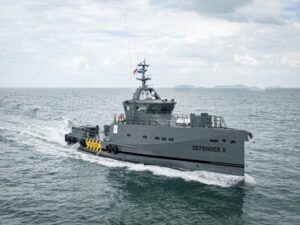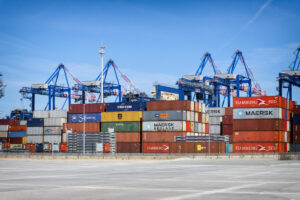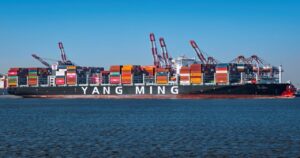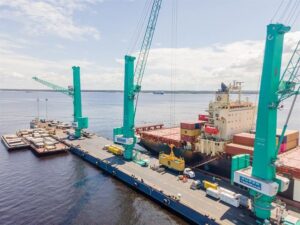Rolling out liquefied natural gas (LNG) infrastructure for shipping in Europe would cost US$ 22 billion and deliver a 6% reduction in ship greenhouse gas emissions by 2050 compared to the replaced diesel.
This is the key finding from a new independent study for Transport & Environment (T&E) by the University Maritime Advisory Services (UMAS) consultancy.
To date, Europe has spent half a billion US dollars on LNG infrastructure for refuelling ships.
In its announcement, T&E stated that the growth of maritime trade would cancel out “meagre” emissions savings, even before considering the possibly higher rates of methane slip.
A recent US study found methane slippage rates are 60% higher than previously estimated.
The EU’s 2014 Alternative Fuels Infrastructure Directive requires member states to build a comprehensive LNG infrastructure across European ports, paving the way for a large LNG market.
This will make the decarbonization of shipping an even more challenging transition for the industry, the study warns.
Read the latest Port Technology technical paper from the International Chamber of Shipping on the recent GHG strategy from the IMO
Faig Abbasov, shipping officer at T&E, said: “LNG is not a bridge fuel, it’s an expensive distraction that will make it harder for the EU to achieve its shipping climate goals and reduce gas imports from places like Russia.
“Europe should back future-proof technologies that would deliver the much greater emissions reductions that will be needed, including port-side charging or liquid hydrogen infrastructure.
“This means the EU needs to stop mandating LNG infrastructure in European ports.”
In April, the International Maritime Organisation agreed that international shipping must decarbonize and at least halve its GHG emissions by 2050.
Global shipping accounts for 2-3% of emissions and, without additional climate measures, will be responsible for up to 14% by 2050.
Domagoj Baresic, consultant, UMAS and PhD researcher, UCL Energy Institute, commented: “There is an uncertain future demand for LNG as a marine fuel over the next 10 years.
“On the one hand, it is an option for complying with the 2020 sulphur cap, but as it cannot enable the GHG reductions that have been committed to in the IMO’s initial strategy for GHG reduction, and the Paris temperature goals more generally, it is clear its role in shipping's transition to a low-carbon future can only be transient.”
Read more:
-
The American Bureau of Shipping has issued a new advisory on marine oil to help the industry prepare for the IMO’s 2020 global sulphur cap
-
The International Chamber of Shipping has warned of “chaos and confusion” unless the IMO urgently resolves issues with implementing the 0.5% sulphur in marine fuel cap








